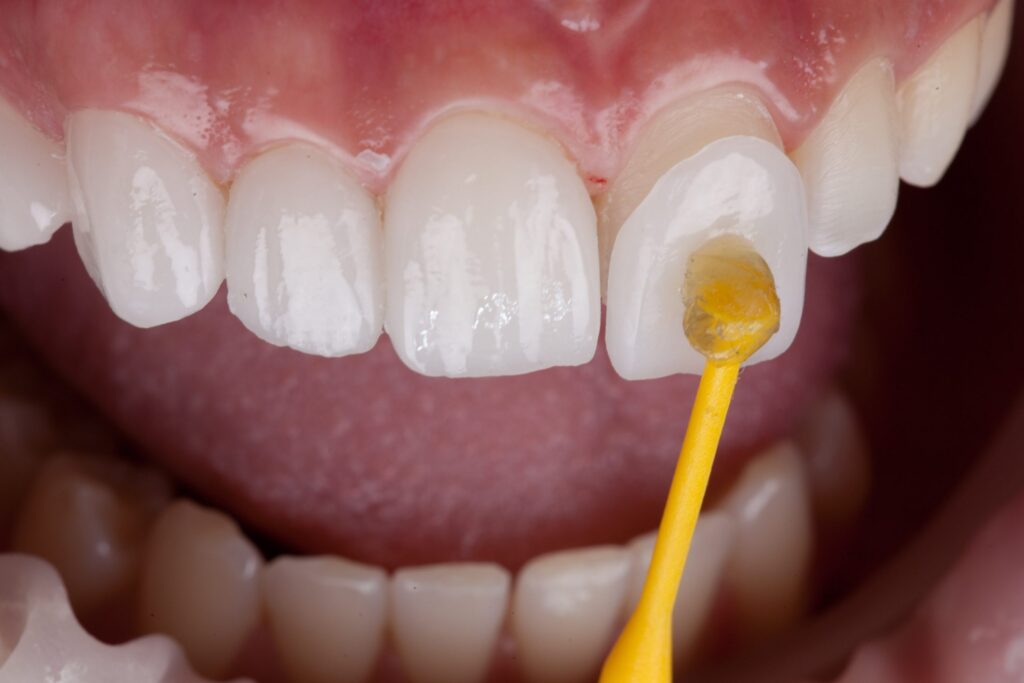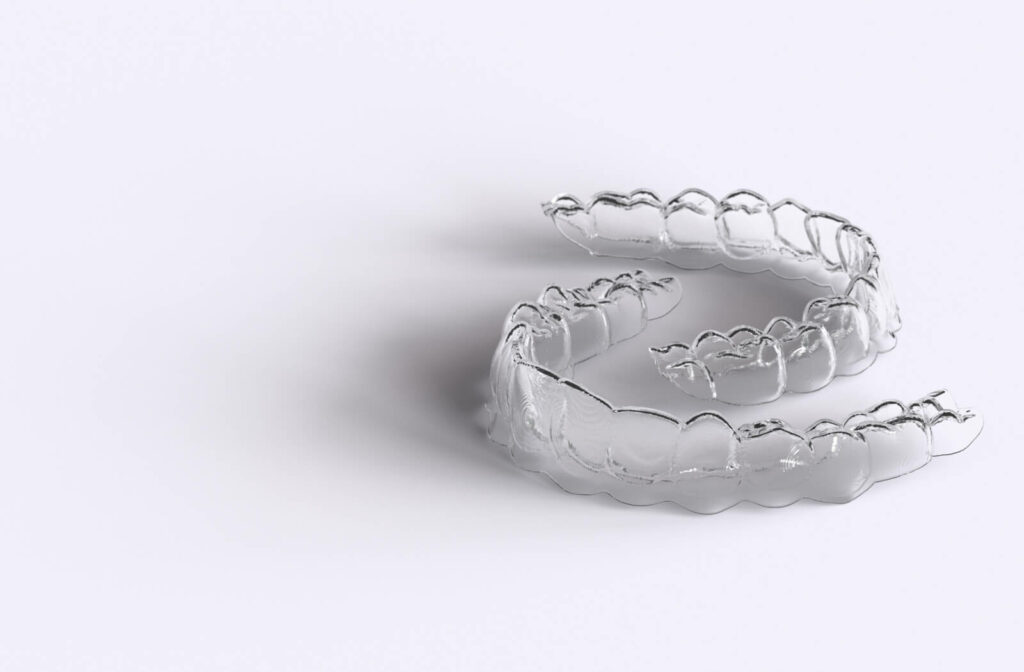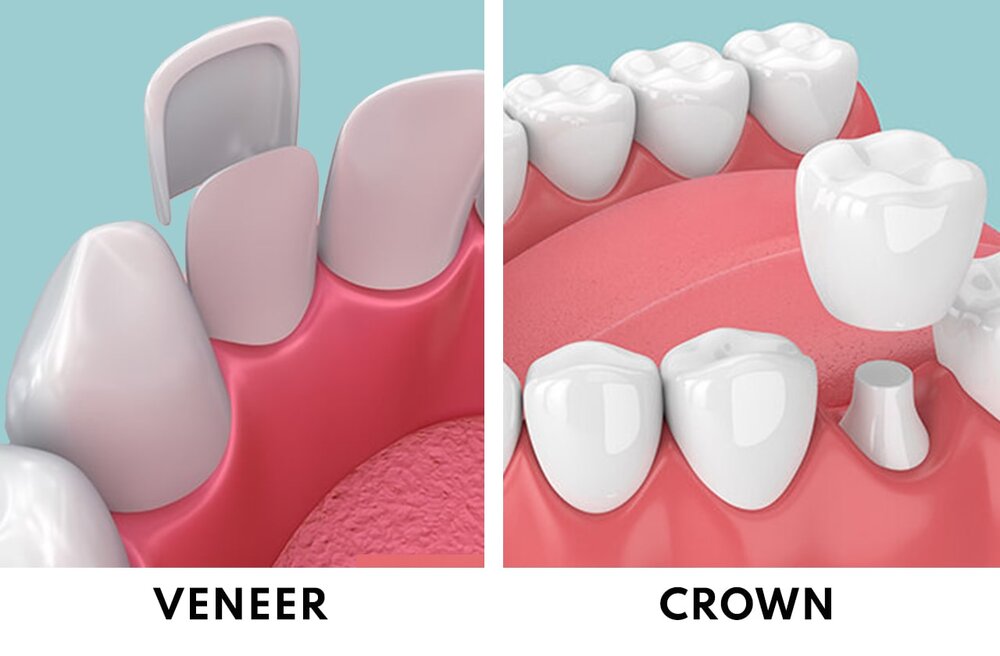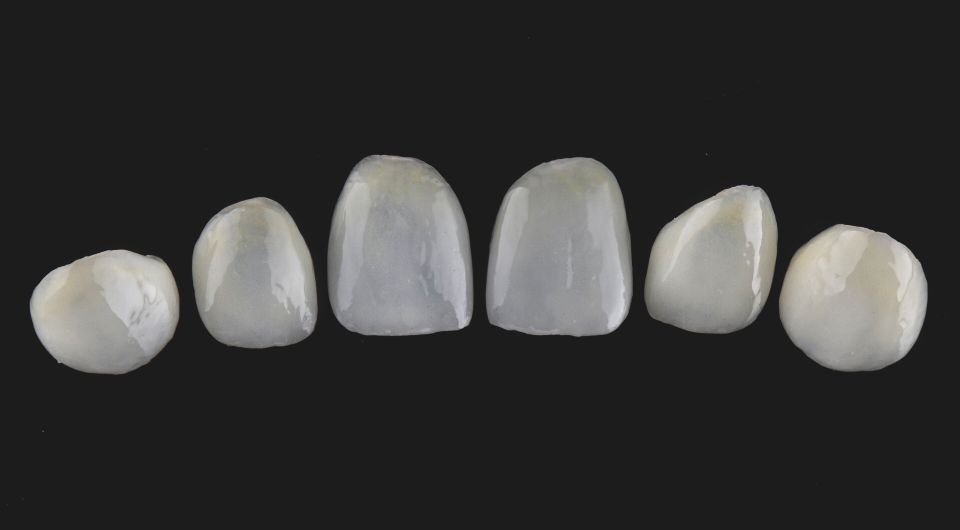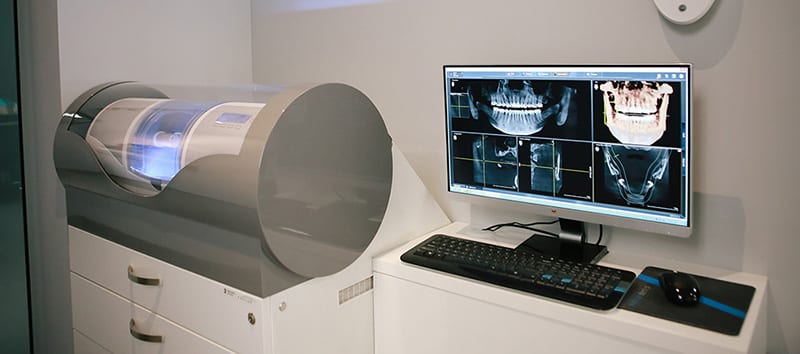
In this crown comparison, CEREC crowns are fabricated and placed in a single appointment using advanced CAD/CAM technology, offering faster treatment with more conservative tooth preparation, though at a higher cost than traditional crowns, while utilizing premium ceramic materials like zirconia that provide exceptional durability and aesthetic results.
Traditional crowns are lab-made and need 2-3 visits. They give you more material choices (like porcelain-fused-to-metal or all-ceramic) and work better for complex cases. Both types last about 10-15 years – your final choice really depends on your tooth’s condition, budget, and personal preference.
This time on our blog, we’re comparing CEREC vs traditional crowns by examining the pros and cons of each to help you determine which restoration might be the better replacement option for your specific dental needs and lifestyle.
Choosing Between Traditional and CEREC Dental Crowns
At D’Amico Dental Care, we offer both CEREC same-day crowns and traditional lab-crafted crowns, each with unique advantages:
✔ CEREC Crowns
- Completed in just one visit (no temporary crowns needed)
- Minimal tooth preparation preserves more natural tooth structure
- Limited to specific ceramic materials (great for straightforward cases)
- Ideal for busy patients seeking immediate results
✔ Traditional Crowns
- Custom-crafted in dental labs (2-3 week process)
- Wider material options, including high-strength zirconia and natural-looking porcelain-fused-to-metal
- Better for complex cases (severely damaged teeth, custom shade matching)
- More precise fit for teeth with unusual shapes or gumlines
When evaluating CEREC vs traditional crowns, our dentists in Watertown and Wayland recommend the optimal choice based on your tooth’s condition, aesthetic goals, and timeline, as CEREC offers unmatched convenience while traditional crowns remain the gold standard for durability and complex-case customization.
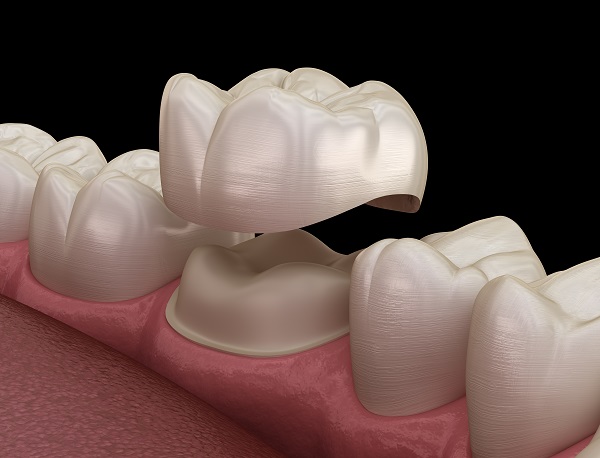
Pros and Cons of Traditional Dental Crowns
In the CEREC vs traditional crowns comparison, traditional dental crowns typically last 10 to 15 years, with long-term studies showing 85-95% patient satisfaction over a decade, though they require biannual dental check-ups to maintain their optimal performance and longevity.
Advantages:
✔ Material variety: Options include porcelain-fused-to-metal, all-ceramic, and zirconia crowns
✔ Complex case solutions: Effective for extensively damaged teeth
✔ Proven durability: Long-standing clinical use with predictable results
✔ Flexible pricing: Multiple cost options based on material choice
✔ Precision for complex cases: Better performance for teeth requiring posts and cores
Disadvantages:
✘ Longer treatment time: Requires 2-3 appointments
✘ Traditional impressions: Can be less comfortable for patients
✘ Human factor variability: Dependent on the lab technician’s skill
✘ More tooth reduction: May need additional tooth preparation
✘ Waiting period: 1-2 weeks fabrication time
Material Diversity in Traditional Crowns
In the CEREC Crowns vs. Traditional Crowns comparison, traditional dental crowns offer exceptional treatment flexibility due to their extensive range of material options that can be customized to meet diverse clinical needs and aesthetic preferences. The most common choices include:
- Porcelain-fused-to-metal (PFM) crowns: Combine metal strength with ceramic aesthetics
- All-ceramic crowns: Deliver natural-looking beauty and high tissue compatibility
- Zirconia crowns: Offer the perfect balance of durability and aesthetics
This crown comparison highlights how material diversity lets dentists select ideal options based on unique patient needs—prioritizing strength for back teeth with PFM crowns handling heavy chewing forces or choosing all-ceramic/zirconia for front teeth to seamlessly blend with natural dentition—while balancing functional demands and aesthetic goals.
In the CEREC vs traditional crowns decision, the optimal material depends on your tooth’s condition (including damage level and position), budget, and aesthetic expectations, as while all-ceramic crowns deliver unmatched natural aesthetics, they may not be suitable for structurally compromised teeth requiring maximum reinforcement. PFM crowns offer reliable strength but with potential cosmetic compromises. Zirconia combines many benefits at a higher price point. Your dentist will evaluate these factors – including your gum health and bite mechanics – to recommend the material that best balances durability, function, and appearance for your specific case.
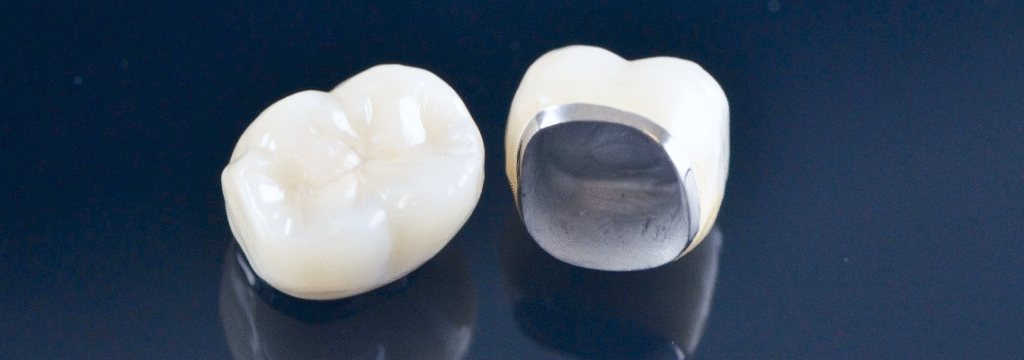
The Capability of Traditional Crowns in Complex Cases
Traditional crowns offer exceptional flexibility in design and implementation, making them an ideal solution for complex dental cases. They provide crucial structural support for:
- Severely damaged teeth requiring posts and cores
- Teeth with significantly reduced height
- Patients with advanced gum disease or bone loss
Thanks to advanced lab techniques, these crowns can be custom-designed to address even severe dental defects while perfectly adapting to each patient’s unique anatomy.
While highly effective, traditional crowns do present some challenges for complex treatments:
✓ Longer treatment timelines requiring multiple visits
✓ Demanding precise coordination between the dentist and the lab technician (especially for multiple adjacent crowns)
✓ Potential need for supplemental gum surgery in cases of weak periodontal support
In the CEREC vs traditional crowns debate, traditional crowns—when carefully planned and professionally executed—remain the most reliable option for restoring complex dental conditions, delivering both enduring functional performance and aesthetic results that stand the test of time.
The Enduring Reliability of Traditional Crowns
In the CEREC vs traditional crowns comparison, traditional dental crowns boast an impressive clinical track record with porcelain-fused-to-metal variants lasting 15-20 years and all-ceramic/zirconia crowns demonstrating 85-95% success rates over a decade, making them a trusted choice that reliably restores both function and aesthetics through high-quality materials and decades of clinical validation when properly maintained.
In the CEREC Crowns vs. Traditional Crowns discussion, a crown’s longevity relies on three key pillars—precise dental workmanship, expert laboratory fabrication, and diligent patient care—where superior materials and perfect marginal adaptation form the physical foundation while the patient’s commitment to oral hygiene and regular dental visits ultimately determines whether the crown reaches its full potential lifespan, making proper home care the most critical variable in the endurance equation for either restoration type.
Unmatched Precision for Complex Dental Cases
Traditional crowns excel in complex dental situations due to their customizable lab fabrication process. Unlike one-size-fits-all alternatives, they allow technicians to manually fine-tune each crown to perfectly match irregular gum lines, complex bite patterns, and teeth requiring major reconstruction. In the CEREC or Traditional Crowns debate, this hands-on approach enables millimetre-perfect adaptations that digital methods sometimes can’t achieve, particularly for multi-tooth restorations or unique anatomical challenges, resulting in crowns that fit like natural teeth while solving even the most complex dental issues.
In the CEREC vs traditional crowns comparison, while traditional crowns set the gold standard for accuracy, their perfection depends on your dentist’s preparation skills and the lab technician’s artistry, as the conventional impression process occasionally requires minor adjustments during fitting and may need several trial fittings for full-mouth reconstructions, though today’s advanced materials and techniques have minimized these limitations while maintaining their reputation as the most reliable solution for demanding dental cases.
Longer Treatment Time of Traditional Crowns
One of the main drawbacks of traditional crowns is the need for multiple dental visits, typically spanning 2 to 3 weeks. During the first appointment, the tooth is prepared, and an impression is taken. In this crown comparison, the traditional process requires patients to wear temporary crowns while awaiting permanent lab-fabricated ones, creating not only time delays but also potential discomfort from damaged/loose temporaries and increased risk of tooth sensitivity or further damage during the waiting period that same-day systems eliminate.
In the CEREC vs traditional crowns debate, the traditional crown’s lengthy process can inconvenience patients needing quick results while each additional visit increases potential human error, though this time investment often proves necessary for achieving high precision and customization in complex cases requiring tailored designs that faster alternatives like CEREC may lack the adaptability to properly address.
Challenges of Traditional Impressions for Dental Crowns
Traditional impressions using alginate or polyether materials remain a crucial step in fabricating conventional crowns. While this method has been used for decades, it comes with several drawbacks:
- Patient discomfort (gag reflex, unpleasant taste)
- Potential inaccuracies due to movement during impression-taking
- Dimensional changes in the material over time
- Technical difficulties with adjacent tall teeth or complex dental anatomy, sometimes requiring multiple attempts
These limitations can affect the final crown’s fit and prolong treatment time.
In the CEREC vs traditional crowns discussion, despite the challenges, hands-on impressions maintain clinical relevance by allowing technicians to physically examine tooth structure—crucial for complex cases—while modern improvements like advanced polyethers and refined techniques have significantly enhanced accuracy, proving that when performed skillfully, traditional impressions deliver reliable, material-compatible results and remain an evolving art form in restorative dentistry.
Increased Tooth Reduction in Traditional Crowns
In the CEREC vs traditional crowns comparison, one key drawback of traditional crowns is their requirement for more extensive tooth preparation compared to modern techniques like CEREC, primarily to accommodate thicker restorative materials (especially metal-ceramic crowns) and compensate for potential impression/fabrication inaccuracies, which becomes particularly challenging with compromised teeth and may even necessitate root canal treatment in severe cases.
At D’Amico Dental Care, we balance tooth preservation with crown durability by using precision digital scans, microscope-enhanced preparations, and advanced materials like zirconia that require minimal reduction. While some complex cases may need more extensive preparation for long-term strength, our dentists in Watertown and Wayland prioritize conservative approaches to prevent unnecessary enamel removal and post-treatment sensitivity. We customize each treatment plan to ensure your crown protects your smile without compromising tooth structure, using the latest techniques to achieve both aesthetic and functional excellence.
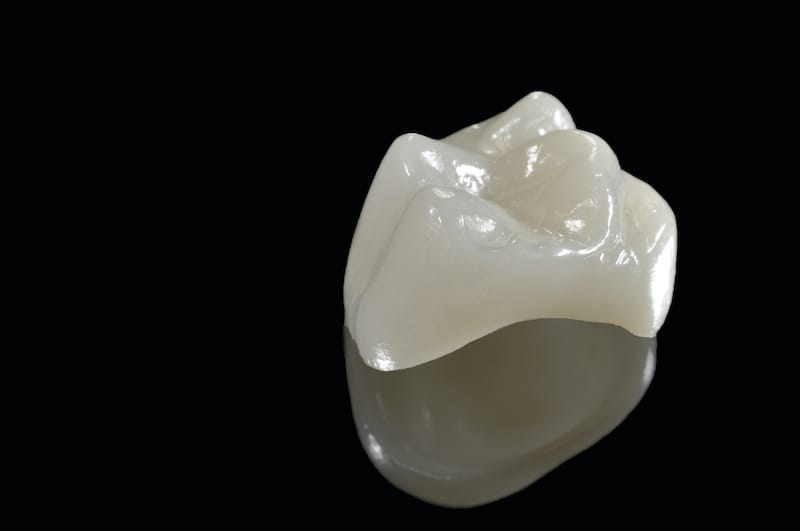
Pros and Cons of CEREC Crowns
In the CEREC vs traditional crowns comparison, CEREC crowns are ideal for patients needing quick solutions with straightforward dental conditions, while traditional crowns often provide superior performance for complex cases or situations requiring specialized materials and customized fabrication.
Advantages of CEREC Crowns
✔ Fast Treatment: Fabrication and placement completed in a single visit (about 2 hours)
✔ High Precision: Digital design with less than 100 microns of margin error
✔ Minimally Invasive: Preserves 15-20% more tooth structure compared to traditional crowns
✔ No Messy Impressions: Uses intraoral scanning for enhanced patient comfort
✔ Premium Materials: Utilizes advanced ceramics like zirconia and e.max
Limitations to Consider
✘ Material Restrictions: Cannot use metal or porcelain-fused-to-metal options
✘ Higher Cost: Typically 20-30% more expensive than conventional crowns
✘ Tech-Dependent: Requires skilled operators for optimal digital design
✘ Not for Complex Cases: Less effective for severely damaged teeth
The Game-Changing Speed of CEREC Crowns
In the CEREC vs traditional crowns comparison, CEREC technology revolutionizes dental crown procedures by delivering same-day results through advanced CAD/CAM systems that digitally scan, design, and mill high-quality ceramic crowns in a single 2-3 hour visit, eliminating multiple appointments and temporary crowns while often achieving superior fit compared to traditional lab-made restorations, making it ideal for busy patients needing immediate solutions.
In the CEREC Crowns vs. Traditional Crowns comparison, while CEREC’s rapid treatment offers undeniable advantages like convenience and eliminating temporary crown issues through skilled clinician-operated digital workflows that enhance accuracy by minimizing traditional impression and lab communication errors, complex cases may still benefit from traditional methods, making CEREC the ideal marriage of dental innovation and patient-centered care that redefines expectations for both treatment speed and restorative excellence in modern dentistry.
The Minimally Invasive Approach of CEREC Crowns
CEREC crowns represent a groundbreaking, minimally invasive solution in restorative dentistry. In the CEREC or Traditional Crowns comparison, this system leverages advanced digital design technology to enable precise, conservative tooth preparation that preserves 20-30% more healthy structure than traditional methods through high-precision intraoral scanners (~20 micron accuracy) that calculate exact minimal preparation requirements. This proves particularly advantageous for:
- Structurally compromised teeth
- Endodontically-treated teeth
- Cases where maximum tooth preservation is critical
In the CEREC vs traditional crowns comparison, CEREC crowns offer significant clinical benefits by preserving more natural tooth structure, reducing the need for additional procedures like posts and cores while minimizing post-operative sensitivity and improving gum tissue health, as research confirms these conservative preparations yield higher long-term success rates when dentists combine skilled digital design with strict minimally invasive protocols, achieving the ideal balance between tooth preservation and durable, aesthetic results that redefine patient-centered care.
The Elimination of Traditional Impressions with CEREC
In the CEREC vs traditional crowns comparison, one of the most significant advantages of CEREC crowns is eliminating traditional alginate or polyether impressions by using advanced intraoral digital scanners that achieve 20-50 micron accuracy to capture precise 3D tooth images, simultaneously enhancing patient comfort (especially for those with sensitive gag reflexes) while avoiding common conventional impression errors like material distortion or movement during setting for superior crown restorations.
At D’Amico Dental Care (Watertown & Wayland), we’ve replaced uncomfortable traditional impressions with fast, precise digital scans that capture your smile in minutes – no gagging, no mess, just accurate results the first time. This advanced technology cuts treatment time in half while providing perfect fits for crowns, veneers, and implants, all stored digitally for future needs. Our Watertown and Wayland patients love how this modern approach makes dental care more comfortable, efficient, and precise, representing the new gold standard in patient-centered dentistry.
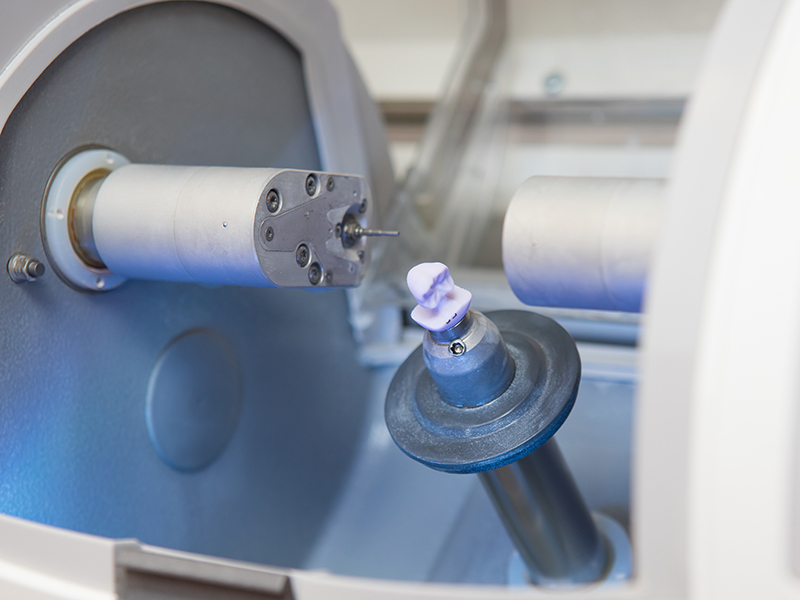
Premium Materials in CEREC Crowns
In the CEREC vs traditional crowns comparison, CEREC crowns utilize advanced ceramics like zirconia (900-1400 MPa flexural strength) for posterior durability and lithium disilicate (e.max) for anterior translucency, all precision-milled from solid blocks using CAD/CAM technology to deliver an exceptional balance of strength and aesthetics that meets diverse clinical needs.
These high-performance materials are:
✓ Biocompatible – Minimizing tissue irritation
✓ Highly durable – Resistant to wear and fracture
✓ Naturally aesthetic – Better color integration than traditional crowns
While the cost is typically higher than conventional options, the extended longevity and superior aesthetics justify the investment. The precise digital fabrication ensures optimal material performance, making CEREC crowns a smart choice for lasting, beautiful smiles.
Higher Cost of CEREC Crowns
CEREC crowns typically cost 20-30% more than traditional options due to several key factors. When considering CEREC or traditional crowns, the advanced technology requires significant investment in equipment like intraoral scanners and milling machines, plus specialized team training, while the high-quality ceramic blocks (zirconia/e.max) command premium pricing due to their superior strength and aesthetics compared to conventional crown materials.
In the CEREC vs traditional crowns comparison, while the initial cost is higher, CEREC provides exceptional value through single-visit convenience that saves multiple appointments, ultra-precise digital fittings minimizing future adjustments, and preservation of natural tooth structure for better long-term oral health, making it a cost-effective choice when considering eliminated lab fees, reduced temporaries, and a typical 10-15 year lifespan that delivers both immediate results and lasting benefits.
Technological Dependence of the CEREC System
In the CEREC vs traditional crowns comparison, the CEREC system’s complete reliance on digital technologies like intraoral scanners, CAD software, and CNC milling machines introduces vulnerabilities where hardware/software malfunctions can disrupt treatment, compounded by ongoing maintenance costs that affect pricing, while the operator’s technical proficiency remains critical in determining final crown quality.
Learning and mastering CEREC design software demands time and specialized training. This crown comparison reveals that while technical issues may force clinics to revert to traditional methods causing delays and software limitations can challenge complex designs, recent digital advancements have significantly improved system reliability, making CEREC more robust and user-friendly for dental professionals handling most routine cases.
“ The high survival and success rates, low number of complications, and the high level of patients’ acceptance of monolithic LDGC CAD-CAM crowns lend them well as predictable and viable alternatives to the “gold standard” MC crowns. “ pubmed.ncbi.nlm.nih.gov
CEREC’s Boundaries in Complex Dental Cases
While CEREC excels at straightforward restorations, its digital workflow faces challenges with complex scenarios like severely compromised teeth needing posts/cores, insufficient tooth structure, or malpositioned teeth. In the CEREC Crowns vs. Traditional Crowns debate, the system’s standardized digital design protocols sometimes struggle to accommodate nuanced anatomical variations that skilled lab technicians manually address, especially for multi-unit bridges or significantly rotated teeth, limitations primarily stemming from current software constraints in handling extreme biological variations though ongoing updates progressively expand CEREC’s clinical versatility.
In the CEREC vs traditional crowns debate, certain demanding clinical situations like full-arch reconstructions, advanced periodontal cases, or meticulous smile transformations still warrant conventional crown techniques where human craftsmanship enables microscopic adjustments and creative solutions beyond current digital capabilities, though the latest CEREC software versions are progressively bridging this gap by handling moderately complex cases that once required full lab fabrication
How Fast Can You Get a CEREC Crown?
At D’Amico Dental Care (Watertown & Wayland), our CEREC technology delivers high-quality crowns in just one visit (about 2 hours total) – no messy impressions or temporary crowns needed. Here’s how it works:
- Tooth Preparation (20-30 min): Minimally invasive shaping guided by digital scans.
- Digital Scanning (5-10 min): High-precision 3D imaging with an intraoral scanner.
- Crown Design (15-20 min): Custom CAD software modeling for perfect fit and aesthetics.
- Milling (20-30 min): Precise fabrication from a ceramic block (zirconia or e.max).
- Bonding (30-40 min): Permanent placement with durable dental cement.
Factors Affecting Treatment Time:
✔ Dentist’s CEREC expertise
✔ Case complexity
✔ Material choice (zirconia vs. e.max)
✔ Need for design adjustments
In the CEREC vs traditional crowns comparison, the key takeaway is that CEREC’s unprecedented speed never compromises quality as its digital precision ensures excellent, long-lasting results in record time, making it the ideal solution for busy patients seeking efficient yet durable restorations.
source: somervilledentist.com
FAQ
- What are the key differences between CEREC crowns and traditional crowns?
CEREC Crowns:
- Digitally designed and fabricated in a single appointment
- Crafted from solid ceramic blocks
- Eliminates conventional impression materials
- Completed in 2-3 hours
Traditional Crowns:
- Requires multiple dental visits (typically 2-3)
- Uses physical impression materials
- Fabricated at external dental laboratories
- Takes 2-3 weeks for completion
- What advantages make CEREC crowns preferable for many patients?
- Same-day restoration completion
- Computer-engineered precision fit
- Eliminates the temporary crown phase
- Minimizes potential human errors
- Superior natural aesthetics with tooth-colored materials
- In which clinical situations might traditional crowns be superior?
- Complex anatomical cases requiring artisan laboratory work
- When metal-ceramic materials are indicated
- Cases requiring meticulous occlusal adjustments
- More cost-effective for certain treatments
- Provides broader shade-matching capabilities in special circumstances
- How do the fabrication processes differ between these two methods?
CEREC Protocol:
- Tooth preparation
- Intraoral digital scanning
- CAD design session
- In-office milling process
- Immediate cementation
Traditional Protocol:
- Tooth preparation
- Conventional impression taking
- Temporary crown placement
- Off-site laboratory fabrication
- Final cementation at subsequent visit
- Which restoration type demonstrates better long-term durability?
CEREC Restorations:
- Solid ceramic monolith construction
- Typical lifespan: 10-15 years
- Excellent fracture resistance
Traditional Crowns:
- Durability varies by material selection:
- Metal-ceramic: 15-20 years
- All-ceramic: 10-15 years
- May require replacement over extended periods
- What are the cost considerations for each option?
CEREC Pricing:
- Generally 20-30% higher initial cost
- Offsets additional visit expenses
- Reduces auxiliary material costs
Traditional Crown Economics:
- Includes temporary crown expenses
- Additional appointment costs
- Comparable insurance coverage for both modalities
- What factors should guide the selection between these options?
Critical decision parameters include:
- Treatment timeline requirements
- Financial considerations
- Case complexity factors
- Practitioner expertise
- Aesthetic demands
- How do patient experiences compare between the two methods?
CEREC Patient Experience:
- Immediate definitive restoration
- Avoids temporary crown discomfort
- Minimizes anesthetic administration
- Reduced clinical time
Traditional Crown Experience:
- Allows for progressive adjustments
- Temporary crown phase (2-3 weeks)
- Requires shade matching procedures
- Broader material selection options

